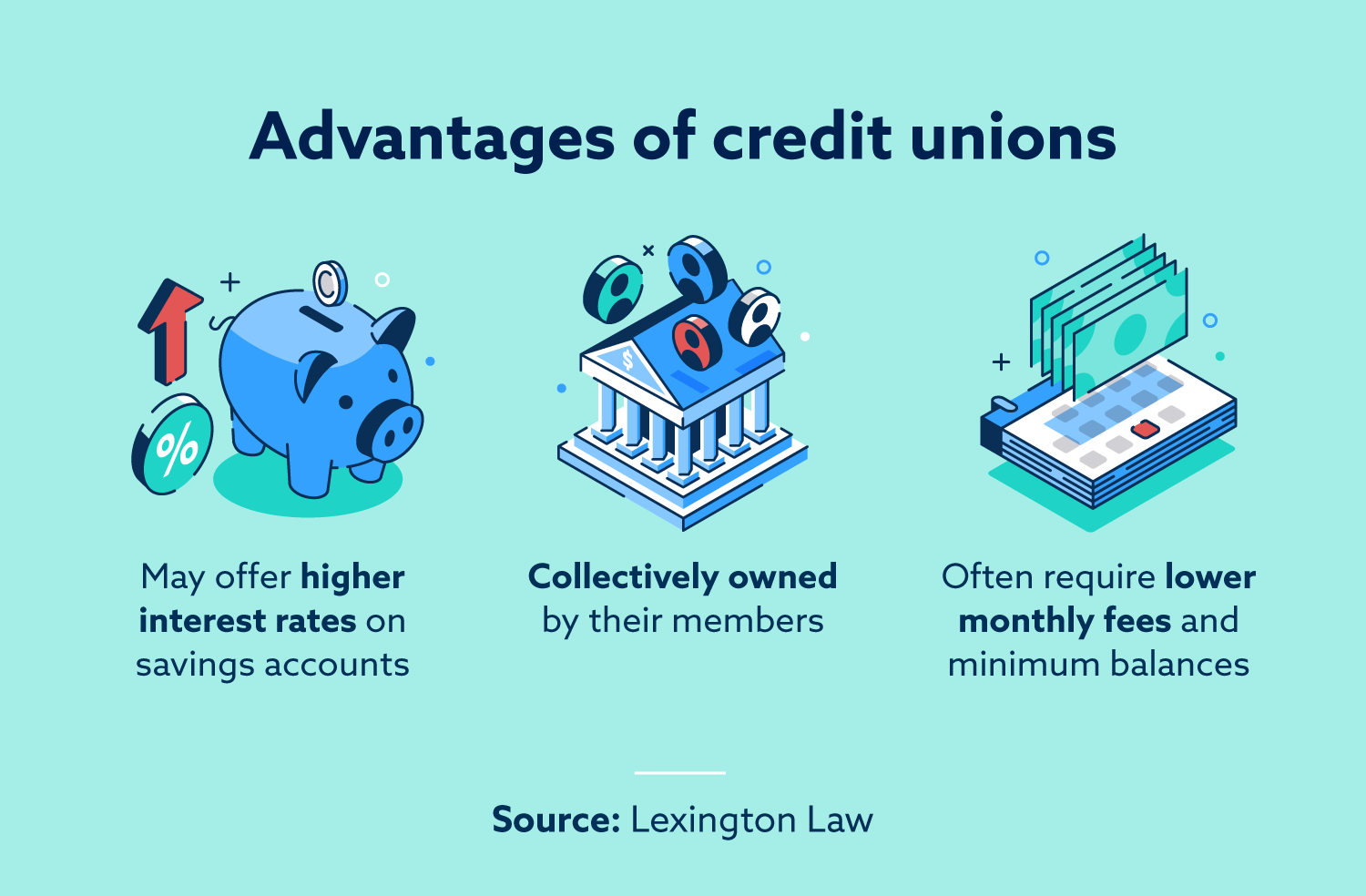Hybrid Line of Credit: Innovative Financial Products from Wyoming Credit Unions
Hybrid Line of Credit: Innovative Financial Products from Wyoming Credit Unions
Blog Article
The Ultimate Guide to Understanding Credit History Unions

Credit rating unions stand as special economic entities, rooted in concepts of mutual support and member-driven operations. As we navigate with the ins and outs of credit history unions, an informative trip waits for to lose light on these member-focused establishments and just how they differ from standard financial institutions.
What Are Lending Institution?
Cooperative credit union are member-owned banks that use a variety of banking services to their participants. Unlike typical financial institutions, credit rating unions run as not-for-profit companies, indicating their key emphasis gets on serving their members as opposed to maximizing earnings. Participants of a credit union typically share an usual bond, such as benefiting the same employer, coming from the exact same neighborhood, or becoming part of the very same organization.
Among the essential advantages of cooperative credit union is that they typically provide greater rate of interest on savings accounts and lower rates of interest on fundings contrasted to banks. Credit Union in Wyoming. This is because lending institution are structured to profit their participants straight, allowing them to pass on their profits in the type of much better rates and fewer costs. Additionally, cooperative credit union are understood for their customized client service, as they focus on constructing connections with their members to comprehend their distinct monetary requirements and objectives
History and Evolution of Cooperative Credit Union
The origins of member-owned monetary cooperatives, understood today as lending institution, trace back to a time when neighborhoods sought choices to traditional financial organizations. The idea of cooperative credit union come from the 19th century in Europe, with Friedrich Wilhelm Raiffeisen frequently attributed as the leader of the cooperative financial activity. Raiffeisen founded the first identified credit score union in Germany in the mid-1800s, highlighting community assistance and self-help concepts.
The development of cooperative credit union continued in The United States and Canada, where Alphonse Desjardins established the first lending institution in Canada in 1900. Quickly after, in 1909, the very first united state lending institution was formed in New Hampshire by a team of Franco-American immigrants. These early credit rating unions run on the fundamental concepts of mutual assistance, democratic control, and participant ownership.
With time, debt unions have expanded in popularity worldwide because of their not-for-profit framework, focus on serving participants, and using affordable financial product or services. Today, lending institution play a crucial role in the monetary sector, providing easily accessible and community-oriented banking alternatives for individuals and companies alike.

Membership and Qualification Criteria
Subscription at a cooperative credit union is normally restricted to individuals fulfilling specific qualification criteria based upon the institution's starting concepts and regulatory requirements. These requirements frequently consist of variables such as geographic location, work standing, subscription in certain companies, or association with specific groups. Cooperative credit union are recognized for their community-oriented approach, which is mirrored in their membership requirements. Federal Credit Union. As an example, some cooperative credit union might just serve individuals who live or function in a certain location, while others may be tailored to workers of a specific business or members of a specific organization.
Furthermore, lending institution are structured as not-for-profit companies, implying that their key goal is to offer their members rather than produce profits for investors. This concentrate on member solution often equates into even more individualized interest, reduced charges, and affordable rates of More about the author interest on financings and cost savings accounts. By meeting the eligibility standards and becoming a participant of a debt union, individuals can access a series of financial product or services customized to their particular requirements.
Providers and Products Provided
One of the key aspects that sets credit rating unions apart is the diverse array of financial services and items they supply to their members. Credit score unions commonly give conventional financial services such as financial savings and inspecting accounts, finances, and credit cards.
In addition, cooperative credit union typically supply practical online and mobile financial alternatives for participants to quickly manage their financial resources. They may offer benefits such as common branching, allowing participants to access their accounts at other credit history unions throughout the country. Some lending institution additionally offer insurance policy products like home, life, and auto insurance coverage to aid participants protect their possessions and enjoyed ones.

Benefits of Financial With Cooperative Credit Union
When considering financial establishments, checking out the advantages of financial with credit rating unions discloses one-of-a-kind advantages for members looking for individualized service and affordable rates. Unlike huge banks, credit history unions are member-owned and prioritize building solid connections with their participants. On the whole, banking with a credit history union can provide an extra customized, cost-efficient, and member-centric monetary experience.
Final Thought
In final thought, credit rating unions stand out as member-owned financial organizations that focus on offering their members over maximizing profits. With origins dating back to 19th century Europe, debt unions adhere to concepts of common help and this article member ownership.
Credit rating unions are member-owned monetary institutions that supply a range of banking solutions to their participants. The principle of credit their website rating unions stem in the 19th century in Europe, with Friedrich Wilhelm Raiffeisen commonly credited as the pioneer of the participating banking movement.The evolution of credit rating unions proceeded in North America, where Alphonse Desjardins developed the first credit report union in Canada in 1900. Credit score unions normally supply conventional financial services such as savings and examining accounts, lendings, and credit rating cards.When taking into consideration monetary organizations, discovering the advantages of banking with credit rating unions discloses distinct advantages for members looking for individualized solution and competitive prices.
Report this page